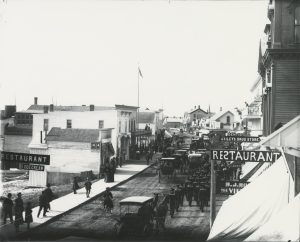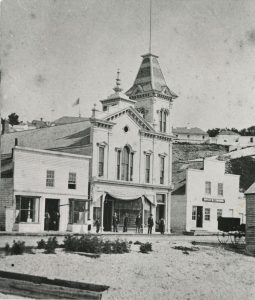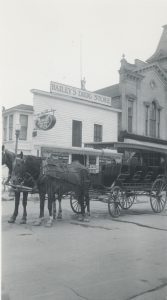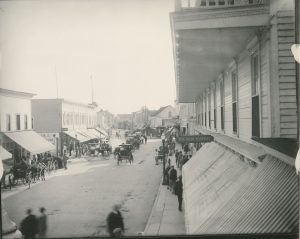Mackinac Island is endearingly cherished among visitors for its placid atmosphere that seemingly evades the changing tides of time. From the Anishinaabek belief that tells the story of Mackinac as Earth’s origin land to the cinematic portrayal of time travel set on Mackinac in Somewhere in Time to horse-drawn drays carrying Amazon packages, the island possesses an unyielding autonomy from the effects of time. Consequently, Mackinac Island demonstrates a unique propensity for preservation and it is the Mackinac State Historic Park’s honored duty to uphold the island’s tradition of conservation. An integral component of this responsibility are the park collections. By preserving artifacts, archives, and material culture, the collection pieces together the past to narrate Mackinac Island’s story. While seemingly trivial to a visitor’s Mackinac experience, the collection is fundamental to ensuring that the island’s treasured history is commemorated for the enjoyment of all for years to come. Yet this commitment to preserve Mackinac Island for generational enjoyment is not a modern concept.

In 1896, photographer William H. Gardiner established a “Photo and Art Studio” aimed at penetrating the souvenir market that emerged as a direct result of the island’s burgeoning tourism industry. Gardiner initially set up shop on the corner of Main and Fort Streets until relocating next door above Fenton’s Bazaar; today both studio spaces constitute Doud’s Market. Gardiner captured the essence of Mackinac Island and preserved its visual history through his photography. His products included keepsakes, such as postcards, hand-tinted photos, and portraits, that memorialized a visitor’s time spent on the island. Gardiner’s photos depict the island’s most unique and treasured attractions, such as Arch Rock, Sugar Loaf Rock, and Main Street. Similar to the collection’s commitment to conservation, Gardiner’s images preserve special moments in Mackinac’s history for reminiscing and nostalgic wonder. The collection and Gardiner’s parallel dedication to preservation can be most explicitly seen in one of Gardiner’s downtown depictions.

At the beginning of the twentieth century, Gardiner stepped out on the balcony of his studio and, struck with inspiration from Mackinac’s vivacious downtown, immortalized a buzzing afternoon on Main Street. This image excellently captures the key components to a day on Mackinac, including a car-less atmosphere, military tradition, and bustling businesses. Some of the storefronts highlighted in the image are Fenton’s Bazaar and Bailey’s Drug Store. These businesses were pillars of Mackinac’s economy around the turn of the century. Dr. Bailey, the son of the surgeon general at Fort Mackinac, served his community as the assisting surgeon and pharmacist, ensuring the health and longevity of Mackinac’s people. Fenton’s Bazaar was a one-stop shop for soldiers, islanders, and visitors alike for all the necessities for life on the island; Fenton’s even introduced the island’s first soda fountain! Fortunately, these businesses and their immense impact on Mackinac’s daily life are remembered beyond Gardiner’s image.

The collection has preserved numerous Bailey’s Drug Store bottles, which represent Dr. Bailey’s committed service and contribution to Mackinac’s medical history. Additionally, the collection possesses an American flag that flew above Fenton’s Bazaar. This flag, which watched over Main Street and witnessed the ebbing and flowing of countless visitors, encapsulates Mackinac’s continued reputation as “America’s Summer Place.” Also in the collection is an image of downtown that is a near copy to Gardiner’s aforementioned photograph. Yet the picture was taken decades after Gardiner’s and is the work of another artist. Taken from the same angle, this picture illustrates a similarly hurried downtown speckled with visitors, carriages, and storefronts. Comparing this image to Gardiner’s, the atmosphere of downtown remains unchanged, yet the storefronts have clearly evolved. For instance, the New Murray stands as the latest addition to the collection of hotels, souvenir shops, and restaurants that line Main Street. Meanwhile, a stroll down Main Street today will still evoke the same timeless ambience found in Gardiner’s image.

Although shop signs have changed, Mackinac’s timeless energy endures. Similar to how Gardiner captured the views of Mackinac to commemorate a visitor’s special experience, the collection plays a crucial role in maintaining Mackinac Island’s abiding charm. Yet preserving history goes far beyond the sweet nostalgia of family vacation postcards. The collection pieces together the past like a puzzle by linking artifacts to moments somewhere in time in order to write the story of the island for the enjoyment of generations to come.









